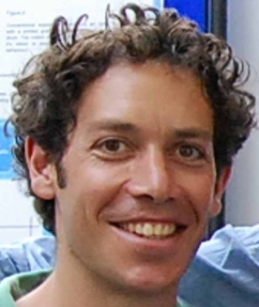Summary
Nir is a Lecturer (Assistant Professor) in the Department of Brain Sciences and a founding fellow of the UK Dementia Research Institute centre at Imperial College London. He is also affiliated with Imperial’s Centre for Bioinspired Technology and Centre for Neurotechnology, MIT’s Media Lab and McGovern Institute for Brain Research.
He received a BSc in Physics from the Israeli Institute of Technology (Technion), an MSc in Electromagnetic Engineering from the Technical University of Hamburg-Harburg (TUHH), Germany, and a PhD in Neuroscience from Imperial College London. Following his PhD, Nir was awarded the BBSRC (Biotechnology and Biological Sciences Research Council) Enterprise Fellowship and he joined Christofer Toumazou’s lab at the Institute of Biomedical Engineering at Imperial. After the completion of the BBSRC fellowship, he was awarded the Wellcome Trust MIT Fellowship and joined Ed Boyden’s lab at MIT’s Media Lab and McGovern Institute for Brain Research and Alvaro Pascual-Leone’s lab at Harvard’s Berenson-Allen Center for Noninvasive Brain Stimulation. He then returned to Imperial and joined the Centre for Bio-Inspired Technology at the Department of Electrical and Electronic Engineering, before joining the Faculty of Medicine.
Nir develops neuromodulatory interventions for brain disorders by pioneering new tools and principles to impact the disease pathology via direct modulation of the underlying aberrant neural activity. His research drives innovation through rigorous scientific exploration of common biophysical principles and rules underpinning the neural processing of electromagnetic stimulation, using natural bridges between advanced computational neuroscience and cutting-edge experiments, ranging from a single neuron cell to human behaviour.
Nir’s work initially focused on optogenetic retinal prosthesis for patients who are blind due to the degeneration of their retina – the main cause of blindness in the developed countries. He used the then newly discovered Channelrhodopsin-2 (ChR2) to photosensitise the residual retinal cells and a novel light source to drive the photosensitised cells non-invasively. In a series of studies that combined single-cell electrophysiology and neurodynamic modelling, Nir and his co-workers helped reveal the underlying principles that govern and limit the optogenetic control of neural activity. During that period, together with his co-workers, he also developed and validated a new stimulating tool to enable simultaneous optogenetic control over thousands of neurons. The paper describing the new tool was awarded Top Paper of the Year 2010 by the referees and readers of the Journal of Neural Engineering.
Later, he redirected his research toward using exogenous electric fields to noninvasively modulate human brain oscillations - a hallmark of physiological and pathological brain functions. In a manuscript recently published in Cell, Nir reported, together with his co-workers, the discovery of a strategy for sculpting the amplitude of electric fields to enable focal, yet non-invasive, electrical neural stimulation. By delivering multiple electric fields to the brain at slightly different frequencies that are themselves too high to recruit effective neural firing, but for which the offset frequency is low enough to drive neural activity, Nir and his co-workers could electrically activate neurons in specific regions without activating neighbouring or overlaying regions.
Selected Publications
Journal Articles
Grossman N, Bono D, Dedic N, et al., 2017, Noninvasive Deep Brain Stimulation via Temporally Interfering Electric Fields, Cell, Vol:169, ISSN:0092-8674, Pages:1029-1041.e16
Grossman N, Nikolic K, Toumazou C, et al., 2011, Modeling Study of the Light Stimulation of a Neuron Cell With Channelrhodopsin-2 Mutants, IEEE Transactions on Biomedical Engineering, Vol:58, ISSN:0018-9294, Pages:1742-1751
Grossman N, Poher V, Grubb MS, et al., 2010, Multisite optical excitation using ChR2 and micro-LED array, Journal of Neural Engineering, Vol:7, ISSN:1741-2560
Nikolic K, Grossman N, Grubb M, et al., 2009, Photocycles of Channelrhodopsin-2, Photochemistry and Photobiology, Vol:85, Pages:400-411

